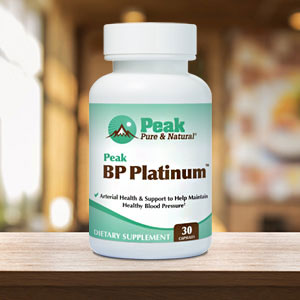Get Easy Health Digest™ in your inbox and don’t miss a thing when you subscribe today. Plus, get the free bonus report, Mother Nature’s Tips, Tricks and Remedies for Cholesterol, Blood Pressure & Blood Sugar as my way of saying welcome to the community!
Why your bone health may be a sign of stiffening arteries

Osteoporosis isn’t something to be taken lightly. It weakens your bones and makes them more likely to break. That means it could land you in the hospital with, say, a broken hip.
Unfortunately, people who end up in the hospital with a broken hip are about 25 percent more likely to die within six months to a year, mainly due to complications related to surgery. So, there are some serious risks associated with this common condition.
But there’s a big difference between osteoporosis and things like heart disease, cancer and diabetes. These are some of the leading causes of death in the entire country. So, osteoporosis isn’t even on the same playing field.
Still, osteoporosis may be an important sign that you have one of these much more fatal, much more serious diseases… heart disease.
Brittle bones increase the risk of dying from heart disease
A recent study published in the Journal of Bone and Mineral Research found that people with lower bone density are more likely to have poor cardiovascular health.
In the study, researchers pulled health data from people participating in the UK Biobank, a large, long-term study in the UK that aims to investigate the roles genes and environmental factors play in disease. The data collected from the UK Biobank allowed researchers to look at a combination of medical imaging and blood test data from the largest sample of people used in a bone-heart health study to date.
Once they analyzed all this data, researchers determined that people with lower bone density are more likely to have arterial stiffness, which is a sign of bad cardiovascular health. They also found that people with poor bone health were more likely to die from ischemic heart disease.
But why do brittle bones put you at risk for a bad heart?
Well, at first you may think it’s because osteoporosis and heart disease share several risk factors — like older age, smoking and a sedentary lifestyle, just to name a few. But researchers accounted for these risk factors in their calculations, so the connection between poor bone health and poor heart health is not due to them.
However, scientists do know that vascular calcification (the development of mineral deposits in your arteries, which can lead to arterial stiffness) and bone mineralization share many overlapping processes in the body. In the end, researchers believe the cause of this connection is due to multiple, complex factors and that these factors vary between men and women.
Habits that protect your bones… and your heart
I think the biggest takeaway here is that by taking steps to keep your bones healthy, you could be reducing your odds of heart disease too. So, don’t slouch when it comes to osteoporosis prevention. Start practicing the following habits:
- Eat a balanced diet, like the Mediterranean diet. This way you’ll get plenty of bone-supporting nutrients, like calcium, magnesium and vitamin D.
- Get plenty of vitamin K2. My colleague, health researcher Virginia Tims-Lawson has studied the relationship between vitamin K2, calcium and heart health rather extensively. She shared information indicating that vitamin K2 is associated with inhibiting arterial calcification and arterial stiffening because it activates a protein that inhibits the deposits of calcium on vessel walls. It also helps direct calcium to the bones where it is beneficial.
- Take a probiotic supplement. Probiotics are notoriously good for gut health, but they’re also good for bone health. A double-blind, randomized study performed by researchers at Sahlgrenska University Hospital in Sweden found that probiotic supplements can help older women cut their bone loss in half. In the study, researchers gave women a probiotic strain called Lactobacillus reuteri 6475.
- Move your bones. Exercise is one of the most reliable ways to fend off osteoporosis and stimulate new bone growth as you age… and there are plenty of research studies that prove it. One study from the University of Missouri-Columbia found that certain weightlifting exercises and jumping workouts improved bone density and increased bone mass in just six months.
Editor’s note: Have you heard of EDTA chelation therapy? It was developed originally to remove lead and other contaminants, including heavy metals, from the body. Its uses now run the gamut from varicose veins to circulation. Click here to discover Chelation: Natural Miracle for Protecting Your Heart and Enhancing Your Health!
Sources:
Osteoporosis — Mayo Clinic.
What Are Vascular Calcifications? — University of Pittsburgh Medical Center.
How a Mediterranean diet could reduce bone loss in osteoporosis — ScienceDaily.
Correlation between osteoporosis and cardiovascular disease — Clinical Cases in Mineral and Bone Metabolism.
Poor bone quality is linked to poor heart health — MedicalXpress.
Poor Bone Quality is Associated With Greater Arterial Stiffness: Insights From the UK Biobank — Journal of Bone and Mineral Research.
The 1-Year Mortality of Patients Treated in a Hip Fracture Program for Elders — Geriatric Orthopaedic Surgery and Rehabilitation.
Proper Calcium Use: Vitamin K2as a Promoter of Bone and Cardiovascular Health — Integrative Medicine: A Clinician’s Journal













